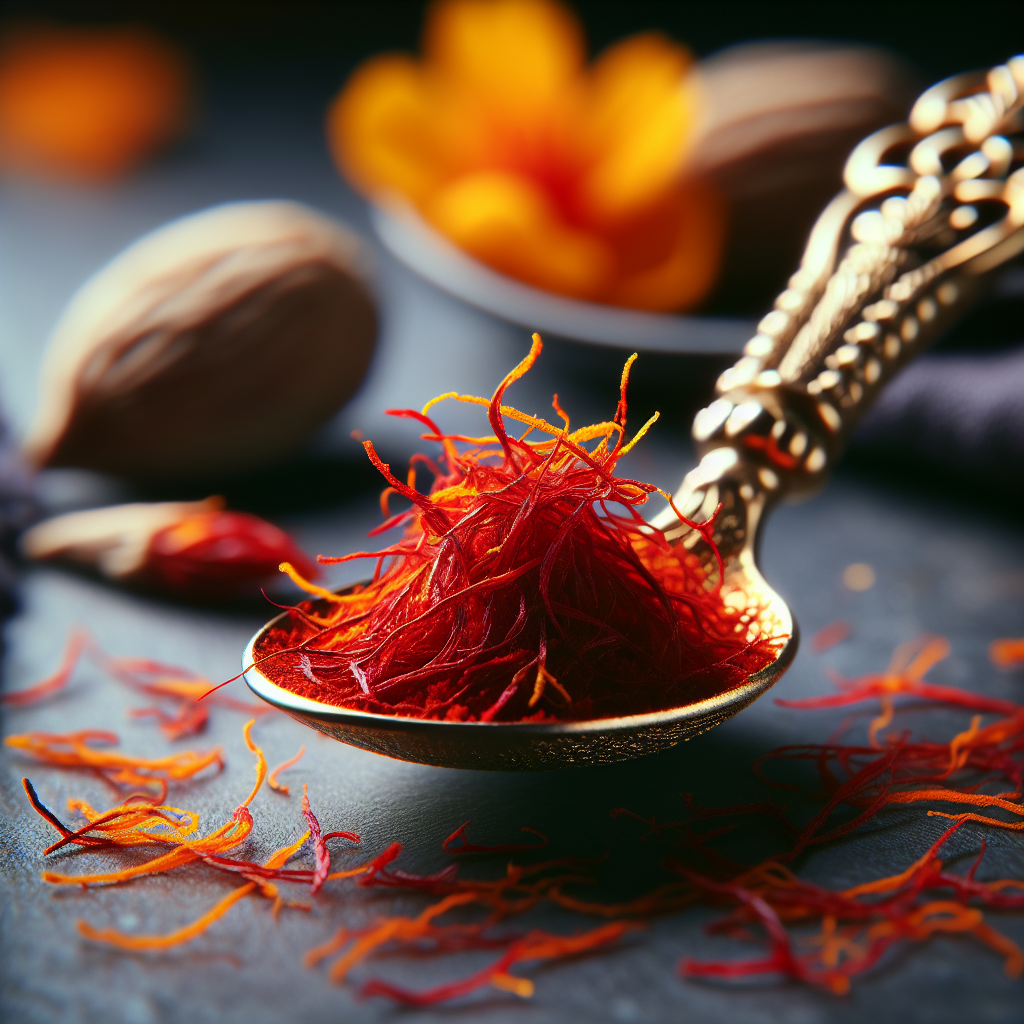Immerse yourself in the rich heritage of food as we take you on a journey through the fascinating history of saffron, the world’s most expensive spice. At Tastepan.com, we are passionate about exploring the diverse world of food culture and traditions. Join us as we delve into culinary histories, regional cuisines, and food-related stories that will deepen your appreciation for the global tapestry of flavors. In this article, we will uncover the intriguing story behind saffron, its significance in ancient civilizations, and its reputation as a luxury ingredient that continues to captivate food enthusiasts worldwide.

1. Ancient Origins
1.1 The earliest records of saffron use
Saffron, the world’s most expensive spice, has a history that dates back thousands of years. The earliest records of saffron use can be traced back to ancient civilizations.
1.2 Saffron in ancient Egypt
Ancient Egypt, known for its rich culture and advanced civilization, also recognized the value of saffron. The spice was highly prized by the Egyptians and was used in various rituals and medicinal concoctions. It was considered a symbol of luxury and royalty.
1.3 Saffron in ancient Mesopotamia
In ancient Mesopotamia, saffron was highly regarded for its medicinal properties. It was used to treat various ailments and was even mentioned in ancient Mesopotamian medical texts. Saffron’s vibrant hue and unique flavor made it a popular addition to dishes in this region.
2. Saffron in the Mediterranean
2.1 Saffron in ancient Greece
Ancient Greece has a deep connection with saffron, both in culinary and medicinal applications. Greek mythology often mentions saffron, and it is believed that the Gods themselves would use it. It was highly esteemed and used in religious ceremonies, cooking, and even as a perfume.
2.2 Saffron in ancient Rome
The Romans, known for their love of luxury, embraced saffron enthusiastically. It was used in various culinary creations, including luxurious dishes served at banquets. Saffron’s vibrant color and distinct flavor made it a sought-after ingredient in Roman cuisine.
2.3 Saffron in the Middle Ages
During the Middle Ages, saffron’s popularity continued to grow in the Mediterranean region. It was used as a natural dye for textiles, giving them a vibrant yellow hue. Saffron also played a significant role in religious ceremonies during this time, symbolizing purity and prosperity.

3. Saffron in Asia
3.1 Saffron in ancient Persia
Ancient Persia, modern-day Iran, has a long-standing history with saffron cultivation. The Persians were skilled saffron cultivators and were among the first to develop efficient harvesting techniques. Saffron became an important part of Persian cuisine, adding flavor, color, and aroma to dishes.
3.2 Saffron in India
India, known for its rich culinary traditions, also has a historic connection with saffron. Indian cuisine incorporates saffron into various dishes, such as biryanis and desserts. Saffron is also used in Ayurvedic medicine for its purported health benefits.
3.3 Saffron in China
In China, saffron was introduced during the Tang Dynasty and quickly became a highly sought-after spice. Chinese traditional medicine recognized saffron’s therapeutic properties, and it was used to treat a range of ailments. Saffron was also used as a culinary spice, particularly in festive dishes.
4. The Saffron Trade
4.1 Saffron along the Silk Road
The Silk Road, a network of ancient trade routes connecting the East and West, played a significant role in the saffron trade. Saffron was one of the highly prized commodities traded along this route, making its way from Asia to Europe and the Middle East. Its rarity and value made it a valuable trading item.
4.2 Saffron in Europe
Europeans were introduced to saffron through trade with the Middle East and the Mediterranean regions. The spice quickly gained popularity among the elite, and saffron cultivation began in countries such as Spain and Italy. Saffron became an integral part of European cuisine, lending its vibrant color and distinct flavor to various dishes.
4.3 Saffron in the New World
With the exploration of the New World, saffron also found its way to the Americas. European settlers brought saffron bulbs with them, and saffron cultivation began in regions such as New England. However, saffron production in the New World never reached the same level of success as in its originating countries.

5. Saffron Today
5.1 Major saffron-producing countries
Today, saffron is primarily produced in countries such as Iran, Spain, Kashmir (India), and Greece. These regions have favorable climates and historical expertise in saffron cultivation.
5.2 Saffron cultivation and harvesting
Saffron cultivation is a labor-intensive process that requires precise conditions. The delicate saffron flowers are hand-picked, and the red stigmas are carefully separated to obtain the valuable saffron threads. The threads are then dried to enhance their flavor and aroma.
5.3 Culinary and medicinal uses of saffron
Saffron continues to be widely used in culinary creations around the world. From traditional dishes to modern gourmet cuisine, saffron adds a unique flavor and vibrant color to various recipes. Furthermore, saffron is believed to have several health benefits, including antioxidant properties and potential mood-enhancing effects.
6. Saffron and Health
6.1 Traditional medicinal uses
Throughout history, saffron has been utilized in traditional medicine for its purported health benefits. It has been used to alleviate symptoms of various conditions, such as depression, anxiety, and menstrual discomfort. Saffron’s antioxidant properties have also been linked to potential protective effects against certain diseases.
6.2 Modern scientific research on saffron’s health benefits
In recent years, scientific studies have begun to explore the potential health benefits of saffron. Research suggests that saffron may have antidepressant properties and may improve mood and cognitive function. Additionally, saffron’s antioxidant and anti-inflammatory properties may have a positive impact on overall health and wellbeing.
7. Saffron in Art and Culture
7.1 Saffron symbolism in different cultures
Saffron holds symbolic significance in various cultures around the world. In some cultures, it represents fertility and good luck, while in others, it symbolizes wealth and prosperity. Its vibrant yellow color is often associated with the sun and is seen as a symbol of energy and vitality.
7.2 Saffron in religious rituals and ceremonies
Religious rituals and ceremonies often incorporate saffron due to its unique properties. In Hinduism, saffron is considered sacred and is used to mark religious objects and places. In Buddhist ceremonies, saffron-colored robes are worn by monks to signify their spiritual devotion.
8. The Challenges of Saffron Production
8.1 Labor-intensive cultivation
Saffron cultivation is a labor-intensive process that requires meticulous care and attention. Each saffron flower produces only a few precious stigmas, making the harvesting process time-consuming and delicate. The labor-intensive nature of saffron cultivation contributes to its high cost.
8.2 Threats to saffron production
Saffron production faces various challenges, including climate change, pests, and diseases. Drought conditions and extreme weather patterns can significantly impact saffron cultivation. Additionally, pests, such as the saffron fly, can damage saffron plants, leading to reduced yields.
8.3 Alternative saffron production methods
To mitigate the challenges of saffron production, innovative techniques such as hydroponics and vertical farming are being explored. These methods aim to optimize resource utilization and create more controlled growing conditions. Alternative cultivation methods may help increase saffron production and ensure its sustainability.
9. Saffron Myths and Legends
9.1 Saffron in mythology and folklore
Throughout history, saffron has been the subject of various myths and legends. Greek mythology attributes the origin of saffron to the tears of the Greek God Hermes. In Persian folklore, saffron is associated with the legend of a princess who turned into a saffron flower.
9.2 Saffron as a symbol of wealth and luxury
Saffron’s high cost and rarity have made it a symbol of wealth and luxury throughout history. In ancient times, it was reserved for the elites and was often used in elaborate feasts and festivities. Even today, saffron continues to be associated with luxury and premium quality.
10. Future of Saffron
10.1 Innovation in saffron cultivation and processing
Advancements in technology and farming techniques are expected to drive innovation in saffron cultivation and processing. Controlled environments, efficient harvesting methods, and automated processing techniques may lead to increased saffron yields and improved quality.
10.2 Saffron as a sustainable crop
Saffron’s potential as a sustainable crop lies in its ability to thrive in arid climates and limited water resources. The cultivation of saffron requires less water compared to other crops, making it an environmentally friendly choice. Additionally, the traditional farming methods employed in saffron cultivation help preserve biodiversity.
10.3 The future demand and value of saffron
As saffron continues to garner attention for its culinary and medicinal uses, the demand and value of the spice are expected to rise. The unique flavor, vibrant color, and potential health benefits of saffron make it a valuable ingredient in various industries, including food, pharmaceuticals, and cosmetics.
In conclusion, the history of saffron is a testament to its enduring appeal and significance. From ancient civilizations to the modern world, saffron has captivated the human imagination with its rich color, distinct flavor, and potential health benefits. As we embrace the future, saffron’s journey continues, promising new innovations in cultivation, expanding applications, and an ever-growing appreciation for this precious spice.

